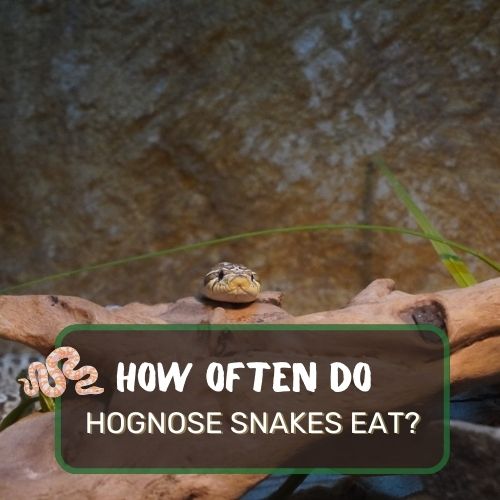
When it comes to the intriguing world of reptiles, one question that often slithers into the minds of hognose snake enthusiasts is, “How often do hognose snakes eat?”
It’s not just a matter of tossing food into their terrarium; several factors influence their dietary needs.
In this article, we’ll delve deep into the feeding habits of these unique creatures, from the influence of age and size to the impact of their environment.
By the end, you’ll have a comprehensive understanding of what, when, and how to feed your hognose snake, ensuring it leads a healthy and happy life.
Dive in and discover the art of feeding these fascinating reptiles!
Table of Contents
- 1 How Often Should a Hognose Snake Be Fed?
- 2 The Basics of the Hognose Snake Diet
- 3 Feeding Frequency for Baby Hognose Snakes
- 4 Transitioning to Adulthood: Changes in Feeding Habits
- 5 Adult Hognose Snake Feeding Schedule
- 6 Factors Influencing Feeding Frequency
- 7 Signs You Might Be Overfeeding or Underfeeding Your Hognose
- 8 Tips for Successful Feeding
- 9 Hognose Snakes as Pets
- 10 Conclusion
- 11 FAQ
How Often Should a Hognose Snake Be Fed?
Hognose snakes, with their distinctive upturned snouts, have specific dietary needs. For baby hognose snakes, it’s generally recommended to feed them every 5 days. As they transition to adulthood, their feeding frequency decreases. Adult hognose snakes should ideally be fed every 7 to 14 days, depending on their size and activity level. It’s crucial to monitor their weight and behavior to ensure they’re neither overfed nor underfed.
Offering appropriately sized prey and maintaining a consistent feeding schedule helps ensure the snake’s health and longevity. Always consult with a reptile specialist or veterinarian for personalized advice.
The Basics of the Hognose Snake Diet

Ah, the hognose snake! With its unmistakably upturned snout and curious demeanor, it’s a favorite among reptile enthusiasts. But, like any pet, understanding its dietary needs is paramount. So, let’s dive into the world of hognose snake diets.
What do hognose snakes eat?
Hognose snakes are primarily insectivores in the wild, feasting on a variety of insects. However, in captivity, their diet mainly consists of rodents, especially mice.
Younger snakes often start with pinkie mice, and as they grow, the size of the mouse is increased. It’s a bit like us graduating from baby food to solid foods as we grow up!
The significance of a balanced diet for their health.
Imagine munching on the same meal every day. Boring, right? While hognose snakes might not crave the variety we do, a balanced diet is crucial for their health.
Offering them a diet that mimics their natural one ensures they get the right nutrients. A well-fed hognose snake has bright eyes, an active demeanor, and sheds its skin regularly.
On the flip side, an imbalanced diet can lead to health issues like obesity, lethargy, and even refusal to eat. It’s like us eating junk food all the time; it’s fun initially but spells trouble in the long run!
Feeding Frequency for Baby Hognose Snakes
Baby hognose snakes, with their tiny size and adorable antics, require special attention when it comes to feeding.
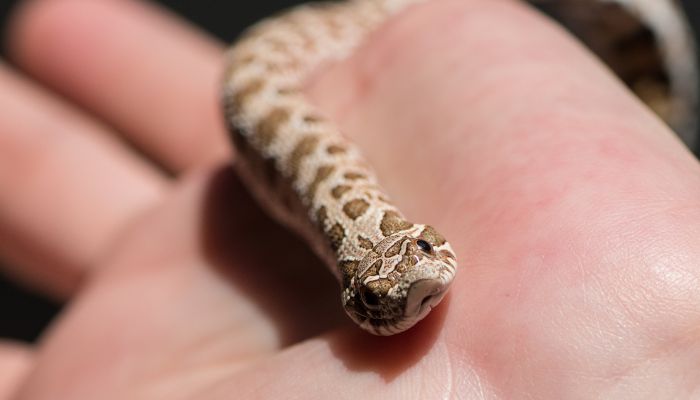
Recommended feeding every 5 days.
Young hognose snakes have a faster metabolism compared to their adult counterparts. This means they need to eat more frequently to support their growth. It’s generally recommended to feed baby hognose snakes every 5 days.
Think of it as the equivalent of a growing teenager constantly raiding the fridge!
Factors influencing feeding frequency for baby hognose snakes.
Several factors can influence how often you should feed your baby hognose. The snake’s activity level, the temperature of its environment, and its overall health play a role. For instance, a more active snake might require more frequent feedings.
Similarly, snakes in warmer environments might have a faster metabolism. It’s essential to observe your snake and adjust the feeding schedule accordingly. Remember, it’s not just about feeding them, but feeding them right!
Transitioning to Adulthood: Changes in Feeding Habits
The journey from a tiny, wriggling baby snake to a majestic adult hognose is a sight to behold. But as they grow, their dietary needs evolve, much like how our food preferences change from childhood to adulthood.
Let’s explore this fascinating transition.
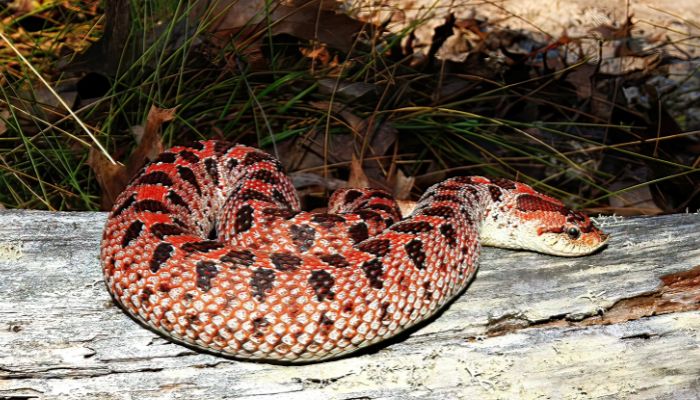
When is a hognose snake considered an adult?
The age of maturity for hognose snakes can vary, but generally, by the time they reach two years of age, they’re considered adults. It’s not just about age, though. Size, weight, and behavior also play a role in determining their maturity.
It’s akin to how humans don’t magically become adults on their 18th birthday; it’s a gradual process influenced by various factors.
How feeding frequency changes as they grow.
As baby hognose snakes transition to adulthood, their metabolism slows down a tad. While they needed frequent meals as babies to support their rapid growth, adult hognose snakes don’t require food as often.
It’s similar to how young children might need snacks every few hours, but adults can go longer between meals. The change in feeding frequency is a natural part of their growth and development.
Adult Hognose Snake Feeding Schedule
Now, let’s talk about the big guys! Adult hognose snakes have their own set of dietary needs and considerations.
General recommendation: every 7-14 days.
For adult hognose snakes, the general feeding recommendation is every 7 to 14 days. This schedule ensures they get the nutrients they need without overfeeding.
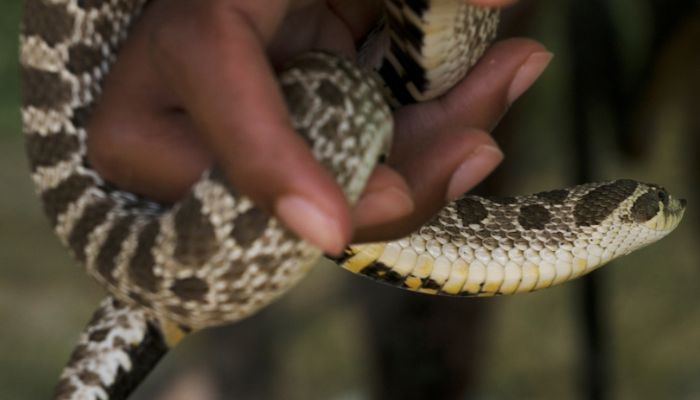
The debate: Weekly vs. bi-weekly feeding.
Ah, the age-old debate! Some snake enthusiasts swear by a weekly feeding schedule, while others prefer bi-weekly.
The truth?
It depends on the individual snake. Factors like activity level, weight, and overall health can influence the ideal feeding frequency. It’s essential to observe your snake and adjust accordingly.
Risks of overfeeding: The overweight snake dilemma.
Overfeeding is a real concern. An overweight hognose snake can face various health issues, from difficulty moving to increased risk of diseases. It’s similar to how humans face health risks when they’re overweight.
Regularly monitoring your snake’s weight and adjusting the feeding schedule can help prevent this issue.
Factors Influencing Feeding Frequency
Feeding your hognose snake isn’t as simple as setting a timer and offering food when it rings. Several factors come into play, determining how often your slithery friend should dine.
Let’s delve into these factors and understand the art and science behind feeding hognose snakes.
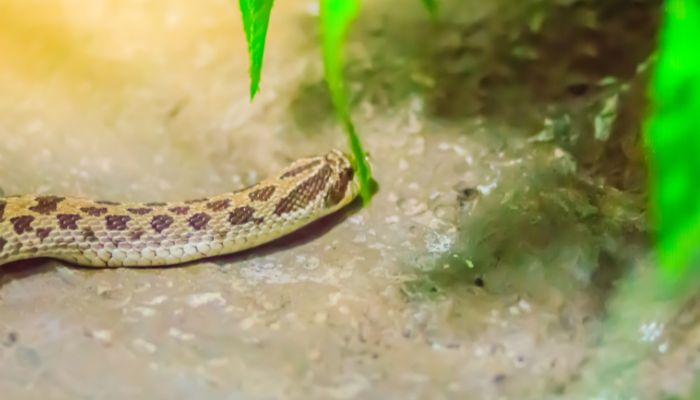
Snake’s age and size.
Just as a toddler has different dietary needs than a teenager, a baby hognose snake’s feeding requirements differ from an adult’s. Younger snakes, with their rapid growth spurts, need more frequent meals to fuel their development.
As they grow and reach adulthood, their feeding frequency typically decreases. Size matters too; a larger snake might require more substantial or more frequent meals compared to a smaller one.
Activity levels and metabolism.
Think of your hognose snake as an athlete. A more active snake, always on the move and exploring, burns more energy and might need to eat more often.
On the other hand, a snake that loves lounging around might not require food as frequently. Metabolism plays a role too, with some snakes naturally having a faster metabolic rate than others.
Environmental factors and seasonal changes.
Just as we might eat more in winter and less in summer, snakes too are influenced by their environment. Cooler temperatures can slow down a snake’s metabolism, leading to reduced food requirements.
Similarly, during certain seasons, especially breeding periods, a snake’s appetite might change.
Signs You Might Be Overfeeding or Underfeeding Your Hognose
Feeding your hognose snake is a balancing act. Offer too much, and you risk obesity; too little, and malnutrition looms. So, how can you tell if you’re getting it right?
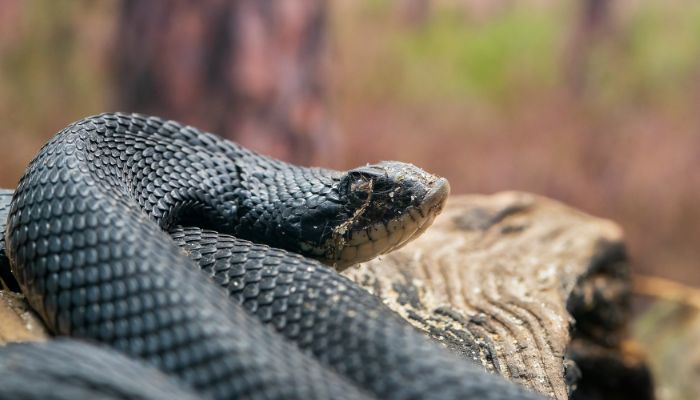
Physical signs: Weight and appearance.
An overweight snake might appear bloated, with visible fat deposits. Conversely, an underfed snake might have a sunken appearance, with its spine more pronounced than usual.
Regular weigh-ins can help monitor your snake’s health.
Behavioral signs: Refusing food, hunger strikes, and more.
A hognose snake refusing food can be a sign of overfeeding. On the flip side, if your snake seems constantly hungry or goes on hunger strikes, it might be a sign of underfeeding or other health issues.
Adjusting the feeding schedule based on observations.
Observation is your best tool. By regularly monitoring your snake’s behavior, weight, and overall health, you can adjust the feeding schedule as needed.
Remember, it’s not about sticking rigidly to a schedule but adapting to your snake’s unique needs.
Tips for Successful Feeding
Feeding a hognose snake can be both an art and a science. It’s not just about offering food; it’s about ensuring the entire experience is positive for your slithery friend. Here are some tips to make feeding time a success.
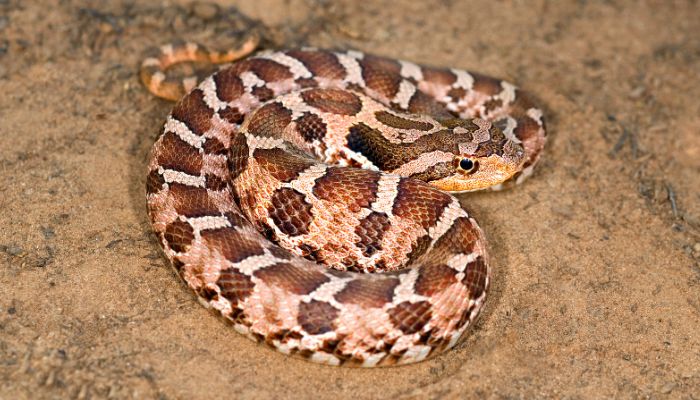
Choosing the right prey size.
Imagine trying to eat a sandwich the size of a car. Impossible, right? Similarly, offering your hognose snake prey that’s too large can be overwhelming and even harmful.
The prey should ideally be about the same width as the widest part of the snake’s body. This ensures it can be swallowed easily and digested properly.
The “two pinkies” test for determining readiness for larger prey.
Not sure if your snake is ready for bigger prey? The “two pinkies” test can help. If your snake can comfortably eat two pinkie mice in quick succession, it might be ready to move on to larger prey, like fuzzies.
It’s a bit like a toddler transitioning from milk to solid food – you look for signs of readiness and adjust accordingly.
Creating a stress-free feeding environment.
Imagine trying to eat in a noisy, chaotic environment. Not very appetizing, right? Hognose snakes feel the same way. Ensure the feeding area is calm, quiet, and free from disturbances.
Some snakes prefer privacy, so consider placing them in a separate container or providing a hide during feeding.
Hognose Snakes as Pets
Hognose snakes, with their unique appearance and curious nature, have become increasingly popular as pets. But are they the right fit for you?

Their suitability as pets.
Hognose snakes are generally docile and easy to handle, making them suitable for both novice and experienced reptile enthusiasts. Their relatively small size and unique behaviors, like playing dead, add to their appeal.
Their size and lifespan.
Typically, hognose snakes grow to about 2 feet in length, with some reaching up to 3 feet. With proper care, they can live for 10 to 15 years, making them a long-term commitment.
Their diet in captivity, including feeding them dead mice.
In captivity, hognose snakes primarily eat rodents, especially mice. While live prey can be offered, feeding them pre-killed or frozen-thawed mice is safer, reducing the risk of injury to the snake. It’s also more humane for the prey.
Tips on care and potential challenges.
While hognose snakes are relatively easy to care for, they do have specific needs. A proper terrarium with the right temperature and humidity levels is essential. Regular cleaning and health check-ups are also crucial.
One potential challenge is their occasional refusal to eat, which can be due to various reasons, from stress to health issues. It’s essential to be observant and seek expert advice if needed.

Conclusion
You’ve journeyed through the intricate world of hognose snake feeding habits, uncovering the nuances that dictate their dietary needs.
From understanding the basics of their diet to recognizing the signs of overfeeding or underfeeding, you’re now equipped with the knowledge to provide optimal care for your slithery companion.
Remember, age, activity levels, and environmental factors all play a pivotal role in determining how often these fascinating creatures should eat.
As you continue your journey with your hognose snake, always prioritize observation and adaptability.
Every snake is unique, and by being attentive to their needs, you ensure their health and happiness.
Keep up the fantastic work, and here’s to many fulfilling years with your hognose snake! Your dedication to understanding and caring for them truly makes a difference.
Keep learning, keep observing, and always trust in the bond you share with your reptilian friend.
FAQ
Navigating the world of hognose snake care can be filled with questions. Here are some frequently asked ones to guide you on your journey with your slithery companion.
How long can a hognose go without eating?
Hognose snakes, like many reptiles, can go for extended periods without food. An adult hognose can typically go for a few weeks without eating, while younger ones might start showing signs of distress after 10-14 days. However, prolonged refusal to eat can indicate stress, illness, or other issues, so it’s essential to monitor their behavior and consult a vet if needed.
Can you overfeed a hognose snake?
Absolutely! Overfeeding can lead to obesity and related health issues. While it’s tempting to offer food frequently, especially when your snake seems hungry, sticking to a recommended feeding schedule and monitoring their weight is crucial. Remember, it’s about quality, not quantity.
What is the best time of day to feed a hognose snake?
Hognose snakes are diurnal, meaning they’re most active during the day. However, the late afternoon or early evening, when they’re naturally hunting for food in the wild, is often the best time to feed them in captivity.
How often should I feed a 1 year old hognose?
A 1-year-old hognose is transitioning from babyhood to adulthood. Typically, at this age, feeding them every 7-10 days is recommended. However, always consider their size, activity level, and overall health when determining the feeding frequency.

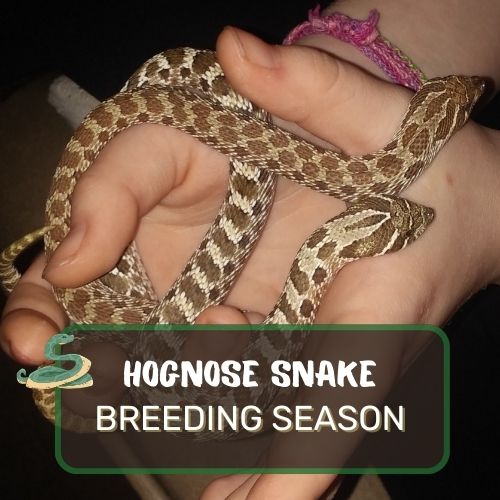
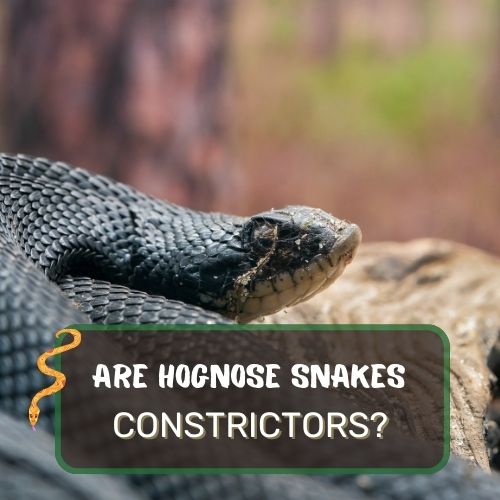
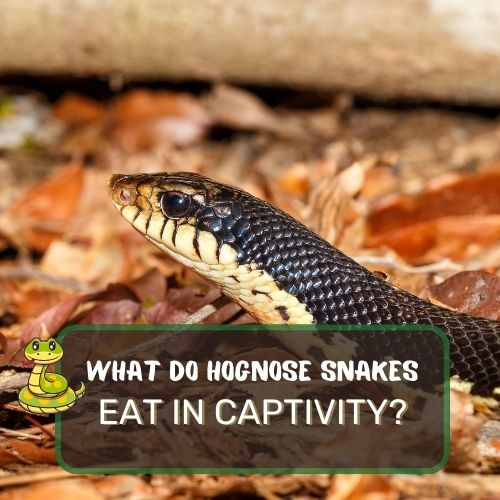
0 Comments